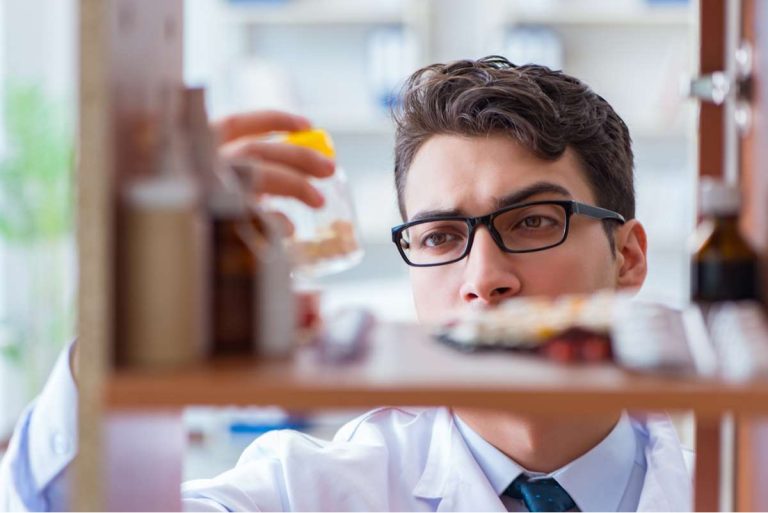Because assessing benefits in large patient groups over time is difficult, diagnostic thresholds are always subject to debate and adjustments. It can be debated whether diagnostic thresholds “merely” capture the extreme of a single underlying population, or actually identify a subpopulation that is at some level distinct. Resolving this issue remains challenging in addiction, but once again, this is not different from other areas of medicine [see e.g., [12] for type 2 diabetes]. Longitudinal studies that track patient trajectories over time may have a better ability to identify subpopulations than cross-sectional assessments [13]. The informants expressed strong emotions when talking about the close relationships in their lives.
- In the Tyrili cohort 2016 study, quantitative methods were used to examine quality of life, cognitive functioning, psychological distress and experiences of trauma among 138 patients [5, 40].
- He suggested that the addiction field needed to follow the rest of medicine in moving away from viewing disease as an “entity”, i.e., something that has “its own independent existence, apart from other things” [11].
- Extant empirical studies have demonstrated that social isolation is a significant antecedent to smartphone addiction.
- Combining this method with contemporary sequencing techniques permits thorough exploration of the latter, and through epigenetic approaches could reduce disparities between these models and behavioural theories of addiction.
- But the experience of pleasure is relative; it hinges in part on biology and very much on what else there is going on in a persons life that is meaningful or rewarding.
Professional development
Eventually, most individuals with an addiction reach a more mature and realistic psychological state, in which defenses may be more stable and the individual less threatened by the internal and external worlds (see depressive position in Klein, 1946). However, it has been argued that this developmental achievement is not stable enough given the absence of “containment” (Bion, 1962) or psychological support from early caregivers. Therefore, individuals with addiction are more prone to retreat to more primitive coping strategies and psychological states when negative emotions emerge (e.g., withdrawing, or returning to past relationships, behaviors, or fears; Kernberg, 1975). Therefore, addiction may be understood as a failure in the ability to evoke the soothing qualities of the good internal object (i.e., symbolization; Bion, 1962; Klein, 1930; Segal, 1998), or as an attempt to “control” these object qualities through the use of drugs to modulate feelings of distress (Waska, 2006). Aside from this, animal studies possess a tendency to ineffectively translate to clinical situations. Some argue this lack of translatability is a consequence of ill-considered animal study designs, one example being the lack of alternative options to drug taking in classic self-administration studies (Ahmed, 2010).

Recognise One’s Needs for Support and Treatment
- Indeed, substance use is influenced both by the availability of alternative reinforcers, and the state of the organism.
- Other stress-related neurotransmitters including noradrenaline, dynorphin, vasopressin and substance P are also overexpressed (Kwako and Koob, 2017).
- The neurobiological approach allows biological mechanisms to be identified that may contribute to substance abuse and dependence; the psychodynamic approach provides an alternate framework for understanding relational and representational aspects of addiction within a developmental perspective.
- In dismissing the relevance of genetic risk for addiction, Hall writes that “a large number of alleles are involved in the genetic susceptibility to addiction and individually these alleles might very weakly predict a risk of addiction”.
Ethical issues were considered during the recruitment, the interviews, the analysis, and the data interpretation. Conducting in-depth interviews about sensitive subjects requires great awareness and respect for the ‘informants’ emotions and boundaries [12]. The informants were encouraged to contact their therapist, family, or friends if they needed anyone to talk to about stressful thoughts and emotions following the interviews. The following quotations were translated by the authors and anonymised, but retain the content and meaning of the original narratives. The informants provided written informed consent before the interviews, they were informed about the right to withdraw and data privacy.
A Psychodynamic Way of Understanding Addiction
Addiction is a psychiatric disorder, a pathology of mental and emotionalfunction exacerbated by the reinforcing and neuroadaptive effects of alcohol and/ordrugs. While neither the rodent model nor the behavioral economics models arepsychiatric models built on concepts of dysfunction or disorder, they havecontributed to our understanding of substance use problems. Both are elegant modelswith strong metrics and appealing concepts, each supported by more than 40 years ofresearch http://www.kramatorsk.org/view.php?id=2206&cat=8&subcat=809&subsubcat=0 and theory development. However, neither has had much impact on the realworld circumstances of addiction and substance use disorders, on prodromal ordiagnostic identification, or on prevention, treatment, or relapse prevention. At a time when deaths and damaged lives due to alcohol and drug useare at epidemic levels, model-derived research and interventions that havesignificant real world impact on these human crises are the crucial measure of anaddiction model’s value.
ORIGINAL RESEARCH article
Possibly the most prominent contention to brain disease models stems from research psychologist Gene Heyman, who argues that addiction is not a disease but a voluntary choice (Heyman, 2009). Heyman’s viewpoint stemmed from psychiatric epidemiological studies and described replacement of predetermined social rules with self-centred rationalisations as the paramount explanation for addiction (Hunt, 2010). One of the most notable findings of brain imaging studies of addiction is the degree to which, through dopamine pathways, the prefrontal cortex is consistently dysregulated, disempowered in response to activation of the nucleus accumbens by drug cues. Brain imaging studies help explain how drug cues biologically narrow focus on the substance of abuse, motivate the drive to get it, and impair rational decision-making—brain changes that make addiction a self-perpetuating condition. The brain chemical that plays a starring role in addiction is the neurotransmitter dopamine. Addictive drugs such as cocaine, heroin, and many others—and eventually, just the anticipation of consuming those agents—cause a flood of dopamine to be released in the nucleus accumbens of the brain, creating an intensely pleasurable sensation.

Drug addiction: from bench to bedside

Their genetic makeup inclines them to develop such personality traits as thrill-seeking. Their craving for risk and novelty takes the fear out of drug use and the huge dopamine boost powerfully reinforces the motivation to seek the reward over and over again. The vast majority of children http://www.glbthealth.org/CommunityStandardsofPractice.htm whose parents abuse alcohol or drugs do not grow up to do the same. However, they are at some increased risk for doing so, and there are a number of reasons why. For one, they are exposed to those substances, and exposure during early adolescence may especially influence substance use.
Taxonomy of high risk situations for alcohol relapse: evaluation and development of a cognitive-behavioural model

This neuroscience perspective offers the opportunity to understand more regarding the physical and chemical mechanisms behind addictive processes. However, these theories may not fully capture aspects of conceptualizing the subjective and relational factors in the pathway from substance use to abuse and dependence, which may play a critical role to increasing addiction vulnerability – particularly https://only-paper.ru/load/voennaja_tekhnika_iz_bumagi/broneavtomobil_iz_bumagi/eac_dorchester_acv/12-1-0-7674 across development. This may limit the value of neurobiological approaches to addiction when considered in isolation of these subjective and relational factors. This study confirmed that the direct effect of social isolation on smartphone addiction was significant, which is consistent with previous findings (e.g., Al-Kandari and Al-Sejari, 2021; Brailovskaia and Margraf, 2021; Zhen et al., 2023).